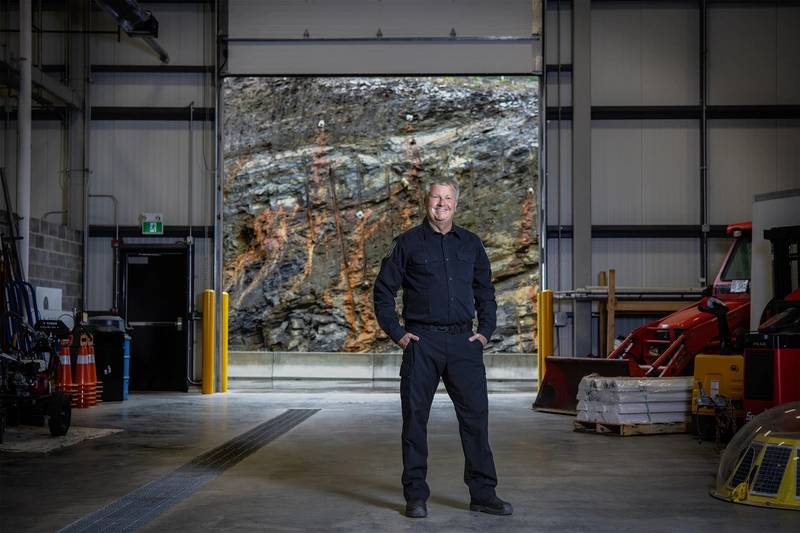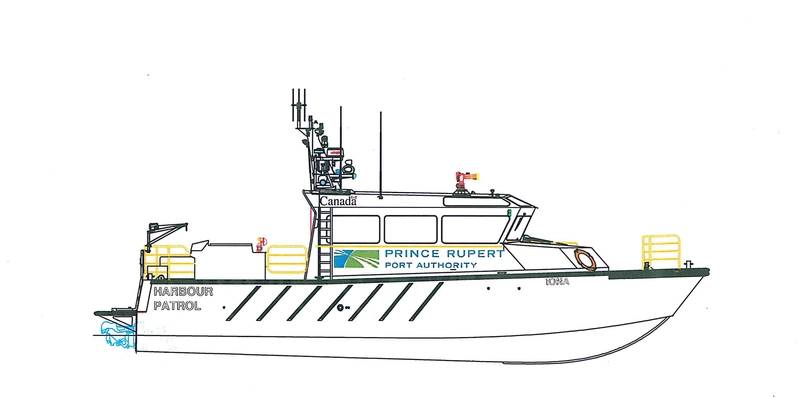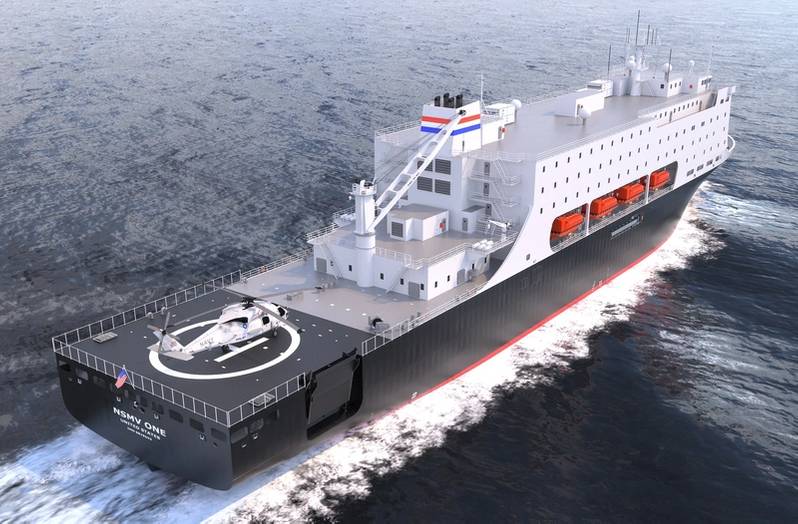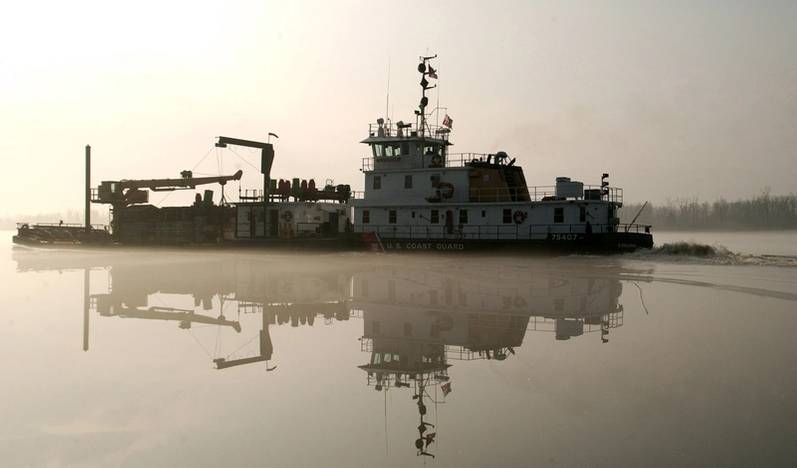Multimission Vessels: Interest Across All Sectors
The development and construction of multimission vessels (MMVs) remains active across the maritime market.
The ability to perform multiple tasks when those different duties are needed is central to an MMV’s value. Multimission capabilities mean that an expensive asset doesn’t sit idle when it isn’t being used for a singular purpose, such as firefighting. This is particularly important for public sector officials who have to weigh costs and benefits across a wide range of demands, from public parks to libraries to firefighting equipment.
“There is increasing demand for multimission vessels in many sectors due to cost-efficiency/efficiency drives,” explained Ben Littler, communications advisor with Damen Shipyards. “One vessel,” he pointed out, “can cover the job of many, allowing operators to offer a wider scope of services to clients. And, of course, it’s very handy when it comes to resale if you can offer the vessel to a wider field of operators.”
As examples, Littler refers to Damen’s Multicat and Shoalbuster vessels as “Swiss army knives.” These MMVs provide capabilities ranging from dredging assistance to offshore towing to anchor handling to marine construction. (It’s worth noting that Damen has contracted for the first Multicats to be built in the US.)
“…And we use it as an aircraft carrier”
Bob Clark is contracts manager for MetalCraft Marine, which manufactures a range of MMV. Clark points out that a boat with a singular mission, say for firefighting or police work, may be used just 200 to 300 hours per year. With MMV capabilities, he noted, “productivity goes way up. You have a much better platform with much more gear for a relatively small increase in price.”
These kinds of expanded benefits stand out in the varied roles for a new vessel—the Amwaal, placed in service in 2019—that MetalCraft built for the Prince Rupert Port Authority in northern British Columbia.
Captain Bernie Egan is the port’s supervisor of marine operations. He described how the Amwaal’s will be working.
The 60-foot vessel has firefighting capabilities. It can serve as a crew boat and is used for environmental response, safety and security patrols. It has a science research station used for water quality sampling and other environmental projects. And it has a new assignment: aircraft carrier.
“We launch drones from the deck,” Egan said. The drones are used for port development projects and to monitor harbor activities. “A much easier effort from 200 feet in the air,” Egan commented.
 Captain Bernie Egan, Supervisor of Marine Operations, Prince Rupert Port Authority. (Photo: Prince Rupert Port Authority)
Captain Bernie Egan, Supervisor of Marine Operations, Prince Rupert Port Authority. (Photo: Prince Rupert Port Authority)
The Amwaal’s original mission, as authorities considered a new port vessel, was as an escort vessel to assist LNG carriers transiting to and from a proposed liquefied natural gas (LNG) facility. That project never materialized but the port has become busier, nevertheless.
Egan said port officials determined a need for speed, all-weather performance, high visibility and firefighting. The final design is largely based on a pilot boat. “We needed versatility,” Egan explained. “The boat had to be multipurpose.”
Vessel crews are cross-trained for all missions, except for science-based water quality work, which is scheduled quarterly. Firefighting training was interrupted by COVID-19 because personnel could not travel between Canada and the U.S. As restrictions lift, that training will resume.
In looking back at the multimission project Egan highlighted, the value of working with a naval architect independent from the vessel’s manufacturer, especially, he added, when it’s a long-distance project. (MetalCraft’s facility is in Kingston, Ontario, 3106 miles from Prince Rupert). Egan complimented the port’s working relationship with MetalCraft. He added though that a consultant’s eagle-eye spotted issues and decisions requiring a learned response. “We had regular meetings with our naval architect,” Egan said, “and while expensive, he saved us costs in working on and resolving problems that he noticed.”
 Amwaal serves a number of roles for the Prince Rupert Port Authority (Image: Prince Rupert Port Authority)
Amwaal serves a number of roles for the Prince Rupert Port Authority (Image: Prince Rupert Port Authority)
Larger vessels: a similar focus
Probably the most important MMV news this past year was MARAD’s cutting-steel announcement at the end of 2020 for the first of five new National Security Multi-Mission Vessels (NSMV).
The NSMVs are primarily purposed for education and training, to be assigned to state maritime academies. However, undertaking additional roles was a priority.
“Multimission capabilities start with the customer’s demands,” explained Eugene van Rynbach, Chairman, Herbert Engineering Corp (HEC), based in Annapolis, Md.
Van Rynbach was project manager for development of MARAD’s NSMV), and the company continues to provide technical support for vessel construction.
Van Rynbach explained that in the past, MARAD had pressed training vessels into service, to assist during emergencies, most notably during hurricanes and to provide humanitarian aid. (The training vessels are part of MARAD’s National Defense Reserve fleet, on a custodial loan to the state maritime academies.)
 Eugene van Rynbach, chairman, Herbert Engineering Corp (Photo: Herbert Engineering Corp)
Eugene van Rynbach, chairman, Herbert Engineering Corp (Photo: Herbert Engineering Corp)
As planning progressed, van Rynbach said MARAD officials kept in mind that training ships were called on for other roles. “It was likely,” van Rynbach noted, “that new vessels would similarly be needed, and decisions were made to design-in expanded capabilities,” to have vessels built to respond to emergency assignments and with the capabilities to perform centrally, not marginally.
The older training vessels are converted merchant ships, hardly built for multiple roles.
As planned, the new NSMV’s multimission capabilities, beyond teaching and training, will be extensive. These ships will have roll-on/roll-off and container storage capacity for the emergency response missions. Each will have hospital facilities, a helicopter pad, and the ability to accommodate up to 1,000 people in port.
 The new NSMV training ships will better meet the maritime academies’ training needs while also providing the U.S. with ships that can support disaster response and other critical national needs. (Image: MARAD)
The new NSMV training ships will better meet the maritime academies’ training needs while also providing the U.S. with ships that can support disaster response and other critical national needs. (Image: MARAD)
MMVs in commerce
Van Rynbach said that among large commercial vessels, a multipurpose design is more common in international maritime trade than in the U.S. On international sea trade routes, particularly in Europe, shippers use what van Rynbach described as modern versions of older style cargo vessels: ships with five holds, separate cranes and removable decks. The ships are versatile and can carry, as a customer might need, break-bulk cargo, project cargo, containers, grain or aggregates.
Similar ships are not used in U.S. mainland trade, van Rynbach explained, because of Jones Act constraints and the economics of using rail and trucks to move freight between U.S. ports. However, containerships with added roll-on/roll-off capability are used between the U.S. mainland and offshore states and territories.
Multiple functions: Central to the Coast Guard
Beyond MARAD, multimission vessels are central within the military, particularly the U.S. Coast Guard.
Consider the USCG’s Sentinel-class fast response cutters. These vessels are built for multiple missions, including port, waterways and coastal security, fishery patrols, search and rescue and national defense.
More recently, in April, the Coast Guard announced plans for a Waterways Commerce Cutter Acquisition Program. This new vessel construction would replace the current inland tender fleet. The primary mission is continuing the USCG’s aids to navigation (ATON) services in six U.S. regions, e.g., inland waterways, Great Lakes and Alaska.
This is critical work. According to the USCG, the Marine Transportation System (MTS) accounts for more than $5.4 trillion annually in U.S. economic activity. Inland ports and waterways are basic MTS components; how well they function, or not, is integral at individual locations and across the system. The USCG’s MTS operations include setting, relocating and recovering buoys in navigable river channels as water levels change, constructing and repairing safety related structures, and specific abilities required to reach and operate in shallow or otherwise restricted waters.
The USCG’s current inland tender fleet includes 35 cutters and 27 barges. Average vessel age exceeds 54 years, vessels are working long past their 30-year design service life.
 The U.S. Coast Guard’s new Waterways Commerce Cutters will replace the aging inland tender fleet, which is approaching obsolescence. (Photo: Thomas M. Blue / U.S. Coast Guard)
The U.S. Coast Guard’s new Waterways Commerce Cutters will replace the aging inland tender fleet, which is approaching obsolescence. (Photo: Thomas M. Blue / U.S. Coast Guard)
For the new commerce cutters, a multimission perspective is central. The USCG’s preferred alternative is for three classes of vessels. Design would maximize “commonality between the three classes to reduce sustainment costs, training needs and other associated requirements,” the USCG writes in its program announcement.
All three variants will be monohull ships, meaning self-propelled cutters instead of tug and barge configurations. The river buoy tender and inland construction tender variants will be acquired on one contract; these variants are expected to be common except for hull length, working deck layouts, and deck equipment, including the crane.
Again, ATON is the primary mission but the cutters will be capable of side and stern towing, or to be towed. They will have capabilities for search and rescue, ports, waterways and coastal security and marine environmental protection, and have the ability “to quickly and effectively respond to emergencies such as environmental incidents and severe weather events.”
Because of their varied capabilities, built in and included from the start, these ships will be able to work 24-7. Downtime with MMVs? Maybe, but not because they can’t do what needs to be done.















